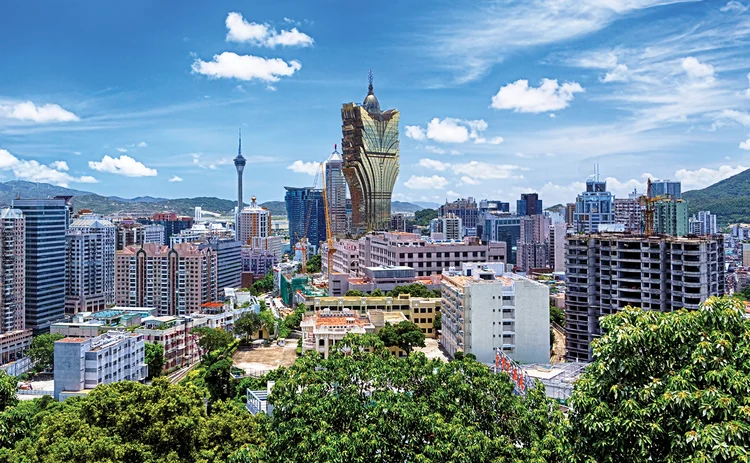
Funding the new Silk Road


The Silk Road Fund (SRF) was established by the Chinese government to support medium- and long-term investment projects. It adheres to the concepts of openness, inclusivity, mutual benefit and win-win outcomes, and follows the principles of marketisation, internationalisation and professionalism. The fund aims to actively expand investment and financing co-operation opportunities by adopting as its mainstay miscellaneous investment methods with medium- to long-term equity investment, and supplementing this with loans and fund investments in collaboration with domestic and foreign investors. The SRF has already signed off more than 20 projects and pledged to invest more than US$8 billion, with the total investment involved predicted to be well beyond $90 billion. With total capital of $40 billion and RMB100 billion, SRF investments go toward infrastructure and energy projects, while fostering co-operation in in Russia, Central Asia, South Asia, Southeast Asia, Western Asia, North Africa and Europe. Investment may be extended to more regions in America and Africa in the future.
Most developing countries along the Belt and Road Initiative (BRI), though currently undergoing significant transformation, are in dire need of countless large-scale infrastructure and industrial capacity co-operation projects to underpin their economic development. Lacking financial strength and with inadequate external capital input, however, these countries rely on the market for long-term investment and require large amounts of financial support at reasonable cost.

Traditionally, most of their investment and financing services are provided by policy- and development-oriented financial institutions. The long-term sources of funds are structural investors such as sovereign wealth funds, pension funds and insurance companies, which are unwilling or find it difficult to finance those large-scale projects because of concerns over financial security and insufficient market mechanisms. To that end, it is necessary to strengthen financial co-operation and encourage financial innovation to better enhance the matchmaking between capital demanders and suppliers. The Guangdong–Hong Kong–Macao Greater Bay Area has much to offer naturally in infrastructure and development projects, particularly in the following three aspects.
1. A launchpad for co-operation
The Greater Bay Area is intensifying financial co-operation and building a platform for multiparty co-operation by leveraging its diversified strengths.
Developing countries are impeded by the shortage of financing for medium- to long-term projects, so BRI financial co-operation requires the joint participation of all stakeholders. Through the diversified co-operation of various regional institutions, all parties can see their benefits and risks better matched to assist developing countries in improving their ability in medium- to long-term sustainable development. Guangdong, with its handful of top-quality high-tech manufacturing enterprises, is a pioneer in reform and the policy of ‘opening-up’ in the Greater Bay Area, and can leverage its years of professional advantages in technology to invest in the BRI. As a huge capital market focusing on financial services, Hong Kong can act as a financial services provider and fund pool for large BRI projects. Macao, a bridge for communication and co-operation with Portuguese-speaking countries – such as Brazil and Mozambique – can assist backers to better understand the projects in these countries and, to a certain extent, arrange credit support for these projects.
The SRF has been exploring various models to fund BRI development through multiparty co-operation. Since 2016, the fund – with development finance institutions such as the Korea Development Bank, Japan Development Bank and Asian Infrastructure Investment Bank – has been making investment in the World Bank’s Asia emerging market fund, covering several projects in countries such as Bangladesh, India and Myanmar. Following the concept of multiparty co-operation, this fund brings Chinese, Japanese and Korean capital into third-party markets, providing impetus for the sustainable economic development and social progress of countries along the BRI. In the meantime, the SRF has maintained sound communication with Shenzhen investment institutions and the Hong Kong and Macao monetary authorities in the hope of providing better financial support for the BRI in the future. There remains much to do in integrating the financial institutions of the Greater Bay Area to jointly invest in the countries along the BRI.
Apart from collaboration with official financial institutions in Japan and the Republic of Korea, the SRF has also kept in close contact with companies and financial establishments in Europe and the US – including the European Investment Bank and General Electric. A memorandum of understanding was signed with the European Bank for Reconstruction and Development.
2. Innovation of renminbi products
The Greater Bay Area is driving forward with financial innovation, particularly in renminbi products.
The major reason behind financial shortfalls in large-scale infrastructure projects and industrial capacity co-operation is project risks are difficult to effectively control and mitigate, and are greater than the benefits. Since the SRF received a capital increase of RMB100 billion in 2017, it has been actively establishing renminbi investment projects overseas. The SRF also observed renminbi hedging instruments lasting three years or more are limited in number and high in costs, which makes it difficult for the medium- to long-term exchange rate risks of the renminbi to be effectively hedged. This, to a degree, restrains the willingness of overseas owners to accept renminbi investment. The Greater Bay Area, on one hand, fully uses its geographical advantages to encourage financial institutions to design targeted financial instruments and infrastructure solutions, continuously promoting innovation and improving market mechanisms. On the other hand, it has actively explored the construction of related projects with the public-private partnership model and, reinforced by equity investment, helped the country in which the project is located to reduce its debt burden, improve project construction and operational efficiency, and boost sustainable development.
3. Developing green finance
A key role of the Greater Bay Area is to bolster sustainable and green finance, and enhance the overall benefits of the BRI.
The international community has recently become more concerned with the social and environmental effects of economic development, and sustainable finance is increasingly recognised and respected by investors. There are two main reasons for this: first, countries are increasingly strict in regulating the environmental, social and governance (ESG) effects of projects; second, research shows that the ESG performance of most projects is positively correlated to long-term financial returns. Thus, many investors regard ESG as an important evaluation factor in the market, and seek out ESG-themed investment funds. Data shows there are currently around 600 funds in ESG-related fields worth approximately $200 billion, focusing primarily on healthcare, new energy, education and training. The Greater Bay Area is underpinned by new economic industrial sectors such as advanced manufacturing, the modern services industry and the international financial industry, all highly conducive to sustainable financial development. For this reason, firms should be motivated to highlight their projects’ ESG performance, and guide project investors and implementers towards improving their corporate governance.
The SRF has always been an active champion of sustainable investment, concentrating on assessing projects’ performance in environmental protection and social responsibility. The fund has partnered with the International Finance Corporation (IFC) – a member of the World Bank Group – and the China Three Gorges Corporation (CTG) to invest in the Ghazi–Barotha hydropower and wind power project in Pakistan in alignment with the China–Pakistan Economic Corridor. Bringing in the IFC’s international standards and experience in corporate governance and financing construction, project leaders exercised strict control over the entire process of development, construction and management, to focus on fulfilling ESG concepts and standards. In addition, the project has elevated the international reputation of CTG. The SRF has been highly supportive of this model project, which has now been completed, with sound economic and social benefits.
Conclusion
As we have seen, these three aspects – building a multiparty co-operation platform, innovating renminbi products, and developing green finance – all hold great promise in improving infrastructure along the BRI. The SRF also looks forward to enhancing co-operation with the Greater Bay Area as well as other countries and regions to boost peace, stability and prosperity in the region and around the world.
Only users who have a paid subscription or are part of a corporate subscription are able to print or copy content.
To access these options, along with all other subscription benefits, please contact info@centralbanking.com or view our subscription options here: http://subscriptions.centralbanking.com/subscribe
You are currently unable to print this content. Please contact info@centralbanking.com to find out more.
You are currently unable to copy this content. Please contact info@centralbanking.com to find out more.
Copyright Infopro Digital Limited. All rights reserved.
As outlined in our terms and conditions, https://www.infopro-digital.com/terms-and-conditions/subscriptions/ (point 2.4), printing is limited to a single copy.
If you would like to purchase additional rights please email info@centralbanking.com
Copyright Infopro Digital Limited. All rights reserved.
You may share this content using our article tools. As outlined in our terms and conditions, https://www.infopro-digital.com/terms-and-conditions/subscriptions/ (clause 2.4), an Authorised User may only make one copy of the materials for their own personal use. You must also comply with the restrictions in clause 2.5.
If you would like to purchase additional rights please email info@centralbanking.com







